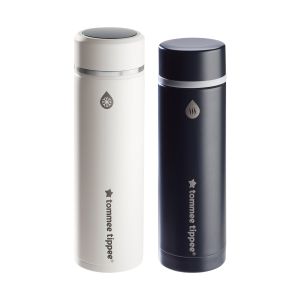
This is a demo store. No orders will be fulfilled.
Subscription orders can be cancelled at anytime. Free delivery on all subsequent subscription orders. Find out more about subscriptions.
They’re easy and fuss free
Your products are automatically sent to you
You save up to 10% when you sign up for a subscription
You can cancel at any time
Most babies and toddlers like to have something soft and comforting, such as a blanket or toy to help them feel secure as they fall asleep.
While you may be embarrassed by their tatty condition or fear what will happen if they get lost, is there any problem with your child using a comfort item?
Comfort items, also known as comfort objects can be very useful in helping little ones settle and go from waking to sleeping. They can also help babies and toddlers feel more secure when they���re away from mum and dad. That���s why they���re known as transitional objects. They help your child transition from one state to another (e.g. waking to sleeping) and provide feelings of comfort and security when a baby or toddler is away from familiar people and surroundings.
Because these comforters help your child feel safe, calm and happy, you shouldn���t discourage them, no matter how worn and grubby they look. They are actually a sign that your child is developing skills to help them cope with their independence.
Most babies and toddlers will choose their own comfort item at around 6 months old. They tend to choose something with a soft texture and a familiar smell, such as a favourite toy, comfort blanket or piece of clothing. If your child doesn���t choose something themselves, there���s no need to encourage it, but a comfort object may be worth a try if they don���t sleep well.
Although babies and toddlers choose their comfort item early, you may notice that they need it more aged between 18 months and 2 �� years old.
While it���s fine for your little one to use a baby comfort blanket or toy to help them sleep, it���s important that it���s safe for them to do so.
You should never leave your baby unattended with anything that has a cord or ribbon attached to it, or any toy with parts that may come off when sucked and chewed (e.g teddy���s nose or eyes).
It���s also a good idea to remove the comfort item from baby���s sleeping area, cot or bed once your baby is asleep.
Whether you call it a soother, dummy, pacifier, comforter or binky, you won���t be the first parents to use this comforting item to calm and settle your little one at night.
Sucking is a natural reflex, which babies use to feed and comfort themselves. They may even start sucking their thumb in the womb. While soothers are not an automatic substitute for cuddles, comfort and feeding when your baby is hungry, they are fine for helping them to settle and calm.
If your baby is comforted by sucking, then offering a soother at bedtime can be another tactic to add to cuddling, rocking, singing lullabies and all the other things you do to try and get some sleep.
There are some studies that show that using a soother while your baby sleeps can mean a reduced risk of sudden infant death syndrome (SIDS). It���s not clear exactly why this is the case and there���s no need to give your baby a soother to prevent cot death, but it may make you feel a little less guilty if you choose to.
A soother at bedtime may also encourage your baby to soothe themselves back to sleep. But equally you may find yourself being summoned when they lose it.
Many parents worry about the effect that soothers can have on little one���s developing teeth and mouth. Look for dentist approved soothers which are shaped to suit your baby���s mouth.
All Tommee Tippee soothers are BPA free.
Parents sometimes worry that their child will become so attached to a comforter that they become inconsolable without it. Losing that precious toy or blanky can then become a real source of stress.
If your little one is particularly attached to a comfort item, it���s a good idea to have another one in reserve. Or, if they���re attached to something larger, like a comfort blanket, you may find you can cut it into smaller pieces to have some spares. Remember to alternate them so each comforter is equally worn and picks up the same kind of smells.
Most children will gradually wean themselves off their comfort object, with it gradually becoming less important as they develop their independence. But you may still find the odd much-loved blanky in University halls of residence.